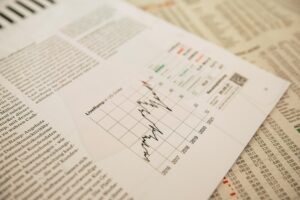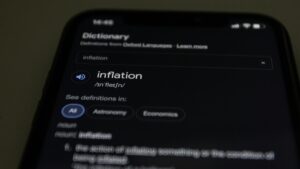
| In a recent turn of events, the Consumer Price Index (CPI) report released yesterday signaled a slight easing of inflation, marking a pivotal moment in the ongoing economic narrative. The CPI, a key measure of inflation tracking the average change over time in the prices paid by consumers for a market basket of consumer goods and services, dipped by a marginal but significant percentage. The data, compiled by the Bureau of Labor Statistics, offers a nuanced view of the current economic landscape. This decrease, albeit small, is the first notable reversal after months of escalating prices, providing a glimmer of hope for consumers and policymakers alike. Key Takeaways from the CPI Report: Marginal Decrease in Inflation: The CPI showed a modest decline, suggesting that the inflationary pressures that have been a major concern for the economy might be starting to ease. Impact on Federal Reserve Policies: This development could have implications for the Federal Reserve’s monetary policy. The Fed, which has been aggressively hiking interest rates to combat inflation, might consider this data when deciding future rate increases. Sector-Specific Trends: Certain sectors exhibited more significant price changes than others. It’s important to delve into these specifics to understand the broader economic implications. Consumer Sentiment: This change in the CPI could influence consumer confidence, potentially impacting spending behaviors and economic recovery. Global Economic Context: The report must be viewed in the context of global economic trends, including supply chain issues and geopolitical factors. The decrease in the CPI is a complex phenomenon, influenced by a variety of factors including government policies, global economic conditions, and consumer behavior. While this dip in inflation is a positive sign, experts caution that it’s too early to declare a definitive trend reversal. The economy still faces numerous challenges, including ongoing supply chain disruptions and geopolitical uncertainties. Moreover, the Federal Reserve’s response to this new data will be closely watched. Their future policy decisions on interest rates will be crucial in shaping the economic trajectory in the coming months. The latest CPI report offers a cautiously optimistic outlook for the economy. While it’s a step in the right direction, the journey towards full economic recovery and stable inflation rates is ongoing. Consumers, businesses, and policymakers must continue to navigate these uncertain times with a balanced and informed approach. |
Significant terms:
- Consumer Price Index (CPI): A measure of inflation tracking changes in consumer goods and services prices.
- Bureau of Labor Statistics: Federal agency collecting and analyzing economic data.
- Inflation: Rise in general prices, reducing purchasing power.
- Federal Reserve: Central bank managing monetary policy.
- Monetary Policy: Central bank actions influencing money availability and cost.
- Interest Rates: Cost of borrowing money, expressed as a percentage.
- Supply Chain Issues: Disruptions in production and distribution.
- Geopolitical Factors: Political and strategic considerations affecting economies.
- Consumer Confidence: Optimism about the economy influencing spending.
- Economic Recovery: Returning to normal economic activity after a downturn.
- Global Economic Trends: Patterns in world economic activity.
- Sector-Specific Trends: Patterns within specific industries.
- Policy Implications: Effects of economic trends on government actions.
- Economic Trajectory: Direction of economic activity over time.
- Economic Recovery: Returning to normal economic activity after a downturn.







Comments are closed.